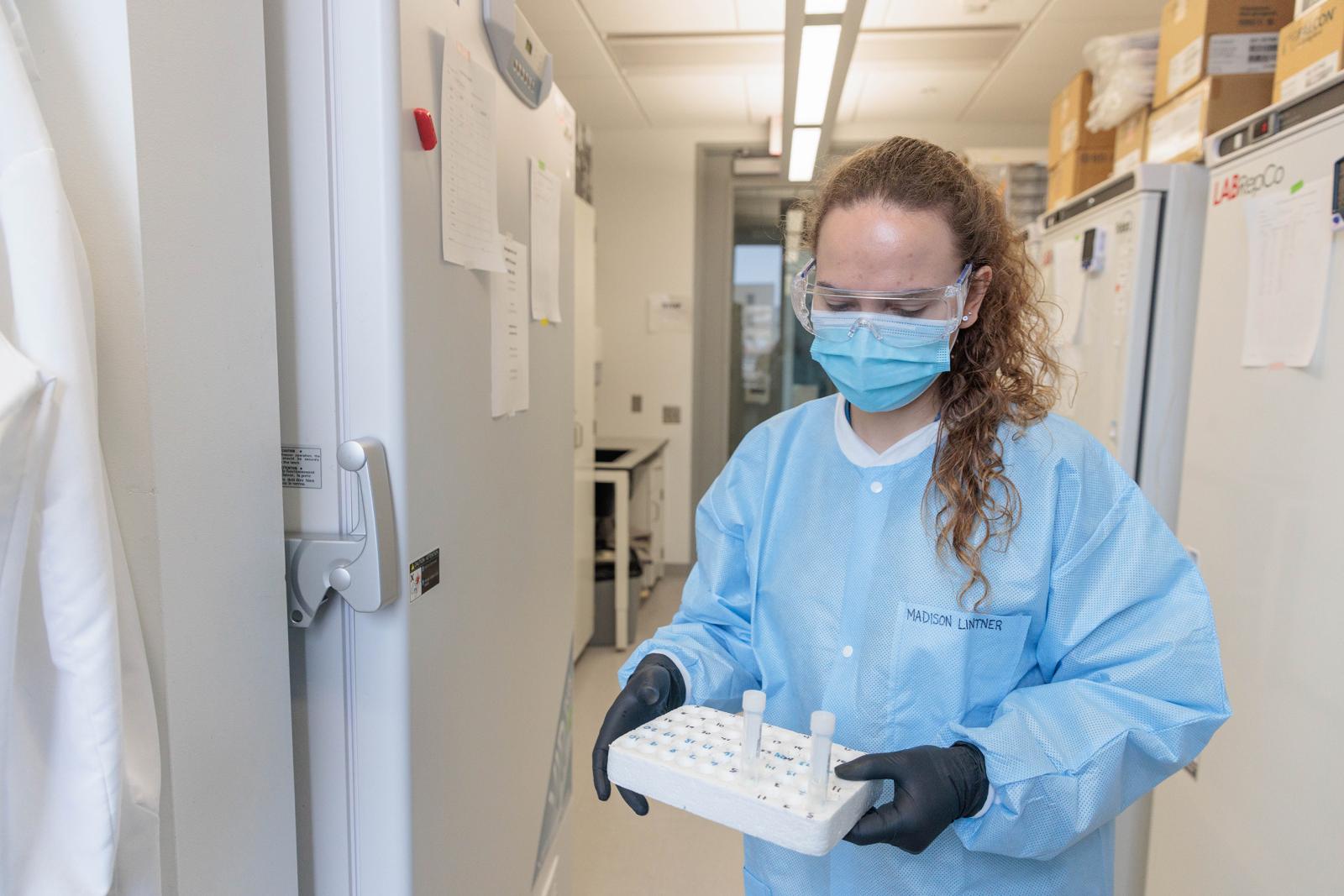Cold & Warm Room Safety
Warm and cold rooms, also referred to as environmental rooms, are designed to control temperature and humidity. Cold rooms can function as low as 35°F and warm rooms up to 120°F. They are used primarily for the growth of cells and organisms storage, but also for general chemistry and biology.
Ventilation: Environmental rooms typically have a closed air circulation. The only source of fresh air is when the door is opened and closed. Therefore, the release of toxic substances from spills or vaporization poses potential occupational health and safety hazards to occupants.
Preventing Mold Growth
Unabated mold growth on environmental room surfaces may lead to mycological contamination of research projects and pose potential health problems from inhalation of spores. Spores can also be tracked out of the room and around the entire floor of the building. Minimizing mold growth requires the control of moisture in the environmental room:
- Keep door firmly shut – if left open, water condensation on surfaces increases due to high relative humidity, promoting mold growth.
- Immediately clean up spilled laboratory liquids (e.g., buffers and media). Moisture may lead to rust, corrosion or degradation of environmental room integrity (e.g., shelves).
- Promptly dispose of wet or damp organic materials (e.g., paper products, cardboard, miscellaneous trash, etc.).
- Store paper products (e.g., Kim wipes) in closed plastic container. Do not use or store cardboard boxes or other absorptive material in cold rooms.
Special Attention to Working in the Cold Room
- The cold room work area like all the other lab space needs to be booked prior to use. All workers must read and sign the associated risk assessment before commencing work.
- As this is essentially a big fridge, it is vital that the door is only kept open for short periods of time, therefore anyone wishing to carry out prolonged work must do so with the door closed. This, of course, leads to the necessity for strict safety precautions being taken when under taking work in the cold room.
- Workers must wear appropriate clothing -‐ ensure that you have warm clothing that will fit under a lab coat where appropriate.
- No lone working -‐ work inside the cold room must be carried out in pairs with a third person, who is aware of the work, outside of the cold room. The third person must be working in the basement area.
- Timers/alarms -‐ Two timers must be set when work commences, one to be kept inside the cold room and one to be kept by the third person. The timers will indicate the maximum time that the workers can stay in the room and when the alarm sounds the workers must take a minimum of 30 minutes break. The person outside of the cold room must ensure that the workers are out.
- The contained atmosphere in environmental rooms and recirculation of most of the air creates a potential for retaining aerosols that are formed during research procedures. This can lead to cross-contamination of research projects and personnel exposure. KEEP THESE ROOMS AS CLEAN AS POSSIBLE.
No Dry Ice, Liquid Nitrogen or Compressed Gas
These may displace oxygen and cause a suffocation hazard. If compressed gas (other than breathing air or oxygen) is essential, contact Office of Health and Safety (OHS) about identifying the correct oxygen or gas sensor and local alarm. Post the alarm procedure and train all room users to it.
NO FLAMMABLE LIQUIDS (e.g., solvents, alcohols): Their vapors can accumulate, creating an explosive atmosphere, which can be ignited by electrical switches or other ignition sources.
NO HAZARDOUS OR VOLATILE CHEMICALS (e.g., chloroform, carcinogens, reproductive toxins, acutely toxic chemicals)
NO VOLATILE ACIDS (which can corrode metal)NO FOOD OR BEVERAGE (which may become contaminated)NO CARDBOARD, WOOD, CLOTH OR PAPER (e.g., boxes, pallets, shelves) These cellulose materials support mold growth that can contaminate research materials or be carried and spread to other areas.


